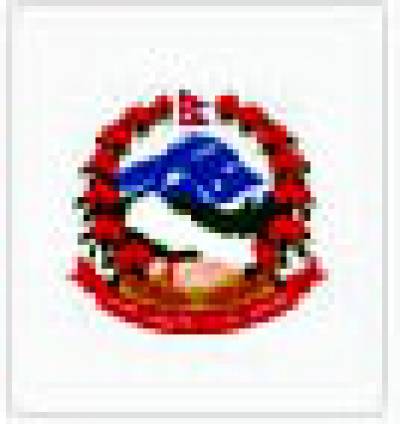ANNAPURNA CIRCUIT TREK 9 DAYS FROM POKHARA
The Annapurna Circuit Trek is one of the most iconic trekking routes in the world, offering trekkers an opportunity to experience the stunning beauty of the Himalayas while immersing themselves in Nepal’s rich culture. Designed by Sherpa Expedition and Trekking, this 9-day package starts with a scenic drive from Pokhara to Besisahar by local bus. From there, you’ll take a shared jeep to Dharapani, the starting point of your trek.
From Dharapani, you begin your trek towards Chame, where you’ll be greeted with panoramic views of the Annapurna and Manaslu mountain ranges. After Chame, the trail continues to Upper Pisang, known for its breathtaking views of the Annapurna Himalaya and its Tibetan-style villages. The trek continues as you make your way to Ngawal Village and then on to Manang, where you’ll spend a well-deserved rest day for acclimatization.
During your acclimatization day in Manang, you have the opportunity to explore the surrounding areas. You can hike to Lama Cave, a serene spot with excellent views, or make your way to Ice Lake for an unforgettable high-altitude trek. After your rest, you’ll continue the journey towards Yak Kharka, a beautiful village at 4,200 meters, and then trek onwards to Thorong Phedi (4,600 meters).
Upon reaching Thorong Phedi, you can take the opportunity to acclimatize further by hiking up to High Camp and returning to Phedi for rest. The following day, you’ll make the ascent to Thorong La Pass, the highest point of the trek at 5,416 meters. After crossing the pass, you’ll descend to Muktinath, a sacred pilgrimage site. On the final day, you’ll take a local bus from Muktinath back to Pokhara, completing your unforgettable adventure in the Annapurna region.
ITINERARY
Day 1 : Drive from Pokhara to Dharapani (1,960m) - Duration: 8-9 hours.
The adventure begins with a scenic 8-9 hour drive from Pokhara to Dharapani, the starting point of your trek. The journey takes you through winding mountain roads, passing through rural villages, terraced fields, and lush forests. Upon reaching Dharapani, you'll be surrounded by the beauty of the Himalayas. This marks the beginning of your trek into the Annapurna region. After arriving, you’ll check into a local teahouse for the night and prepare for the journey ahead.
Day 2 : Trek from Dharapani to Chame (2,760m) - Duration: 5-6 hours.
On Day 2, you’ll start your trek with a 5-6 hour walk from Dharapani to Chame, the administrative headquarters of the Manang District. The trail leads through picturesque villages, with views of Lamjung Himal and Manaslu in the background. As you pass through oak and pine forests, you’ll cross suspension bridges and enjoy the peaceful atmosphere of the region. By the time you reach Chame, you will have gained some elevation, which will help with acclimatization. The town is the perfect spot to relax and prepare for the next day’s trek.
Day 3 : Trek from Chame to Upper Pisang (3,300m) - Duration: 5-6 hours.
On the third day, the trail continues upwards toward Upper Pisang. The trek takes about 5-6 hours, offering a gradual climb through pine forests and rugged terrain. As you ascend, you will be rewarded with stunning views of the Annapurna and Lamjung Himal peaks. The journey is both peaceful and breathtaking, with the opportunity to observe traditional villages and their Tibetan-influenced culture. Upper Pisang offers fantastic views of the surrounding mountains, making it a great place to spend the night.
Day 4 : Trek from Pisang to Manang (3,500m) via Ngawal Village - Duration: 8-9 hours.
Day 4 takes you on a 8-9 hour trek from Pisang to Manang, passing through Ngawal Village. The trail takes you through alpine forests and high-altitude meadows, offering more dramatic views of the Annapurna range. After Ngawal, the path gradually opens up into the more barren, high-altitude landscape. Upon reaching Manang, you will be surrounded by stunning views of Gangapurna and Annapurna III. This large village offers a great base for the next day’s acclimatization and exploration.
Day 5 : Rest Day at Manang for Acclimatization.
A rest day in Manang is essential to acclimatize to the increasing altitude and avoid Altitude Mountain Sickness (AMS). During your stay, you can enjoy several activities to help with acclimatization, such as a hike to the Ice Lake or a visit to Lama Cave, a sacred Buddhist site offering amazing panoramic views of the surrounding mountains. This day is also a perfect time to explore the local culture and relax before tackling the higher elevations.
Day 6 : Trek from Manang to Yak Kharka (4,200m) - Duration: 4-5 hours.
On Day 6, you will continue your trek towards Yak Kharka, situated at 4,200 meters. The trek lasts about 4-5 hours and gradually ascends through alpine meadows and rocky terrain. As you approach Yak Kharka, the landscape becomes more barren and remote. Yak Kharka is a small settlement where you can rest and enjoy the serenity of the high-altitude environment. It also provides a good resting spot to prepare for the more demanding trek ahead.
Day 7 : Trek from Yak Kharka to Thorong Phedi (4,600m) - Duration: 3-4 hours.
Day 7 takes you from Yak Kharka to Thorong Phedi, a journey of 3-4 hours. The trail offers beautiful views of Annapurna and Dhaulagiri, with the terrain becoming more rocky and rugged as you ascend. Upon reaching Thorong Phedi, you will be close to the Thorong La Pass, the highest point of your trek. You’ll have the option to hike up to High Camp for better acclimatization, before descending back to Phedi for a good night’s rest in preparation for the final push.
Day 8 : Trek to Muktinath via Thorong La Pass (5,416m) - Duration: 7-8 hours.
Day 8 is the most challenging day of the trek, as you will make the ascent to Thorong La Pass at 5,416 meters, the highest point on the Annapurna Circuit. The trek starts early in the morning, with a steep ascent to the pass. Upon reaching the top, you’ll be rewarded with breathtaking panoramic views of the Annapurna and Dhaulagiri mountain ranges. After crossing the pass, you will descend to Muktinath, a sacred pilgrimage site for both Hindus and Buddhists. The descent to Muktinath will take another 3-4 hours. You’ll spend the night here, surrounded by the spiritual atmosphere of the region.
Day 9 : Drive from Muktinath to Pokhara (1,400m) - Duration: 7-9 hours.
On the final day, you will take a local bus from Muktinath back to Pokhara, which takes around 7-9 hours. The drive descends through the Kali Gandaki Gorge, the world’s deepest gorge, and offers stunning views of the surrounding mountains, valleys, and rivers. Upon arrival in Pokhara, your Annapurna Circuit Trek comes to an end, and you can relax by the serene Phewa Lake, reflect on your incredible journey, and enjoy the beauty of the region before returning home or continuing your travels.
SERVICES
Cost Included in Your Package
- Drive from Pokhara to Besisahar by local bus and Besisahar to Dharapani by local shared Jeep.
- Drive from Muktinath to Pokhara by local bus at the end of the trek.
- Tea House/Lodge accommodation during the trek.
- Three meals a day (Breakfast, Lunch, and Dinner) are provided throughout the trek.
- Experienced and qualified trek leader (guide) with a government license, and an assistant trekking guide for groups of 8 or more trekkers.
- Porter service: One porter for every two trekkers to help carry your luggage.
- Porters' coverage: Their salary, food, accommodation, insurance, and safety equipment.
- The Annapurna Conservation Area Permit (ACAP) fee is included.
- The Trekkers Information Management System (TIMS) card fee is covered.
- Use of trekking gear: Sleeping bag, down jacket, duffel bag, and walking poles (if you don't have your own), to be returned after the trek.
- Assistance with emergency rescue operations (funded by your travel insurance) in case of severe health conditions.
- Sherpa Expedition and Trekking appreciation certificate after completing the trek.
- Oxygen meter to check your pulse, oxygen saturation, and heart rate twice daily, ensuring your health and safety during the trek.
Cost Not Included in Your Package
- International Flight to and from Nepal.
- Nepal entry visa fee: Visas can be obtained easily on arrival at Tribhuvan International Airport, Kathmandu. The fees are as follows:
- $30 USD for a 15-day visa
- $50 USD for a 30-day visa
- $125 USD for a 90-day visa
- Accommodation and meals in Pokhara (other than those provided during the trek).
- Extra night accommodation in Kathmandu or Pokhara due to early arrival, late departure, or early return from trekking for any reason outside the scheduled itinerary.
- Personal expenses such as shopping, snacks, bar bills, tea, coffee, hot water, bottled or boiled water, shower fees, Wi-Fi, laundry, telephone calls, battery recharges, extra porters, etc.
- Personal clothing and gear not provided in the package.
- Travel insurance: It is strongly recommended to have insurance that covers trekking in high-altitude areas.
- Tips for your guide and porters, which is customary in Nepali culture.
- Additional costs or delays caused by circumstances beyond our control, such as landscape changes, bad weather, itinerary modifications for safety, illness, changes in government policy, political instability, strikes, or other unforeseen events.
- NOTE: If you return earlier from the trek due to sickness or any other reason, expenses for flights, hotels, meals, and other services are nonrefundable. You will be responsible for any additional costs incurred in Kathmandu or Pokhara.
EQUIPMENTS
The following information will give you some idea about what you need to bring for the trek. It is important you do not forget the essential items, as this will determine your comfort and safety on the trek. Equally important is that you do not burden yourself with unnecessary equipment on the trek.
- Sleeping Bag (Sherpa Teams will provide but need to return after completing the trip)
- Duffel Bag (Sherpa Teams will provide but need to return after completing the trip)
- Fleece jacket or pullover
- Waterproof windbreaker or windcheater
- Thermal underclothes
- Rain poncho
- Down jacket (Sherpa Teams will provide but need to return after completing the trip)
- Fleece or wool trousers
- Sun hat or scarf
- Trekking pants (two pairs)
- Mittens or woolen gloves
- Hiking socks (several pairs)
- Moisture-wicking shirts, including t-shirts
- Trekking shoes or boots with spare laces
- Flip-flops or sandals for relaxing in the evenings
- Underwear (several pairs)
- Swimsuit or swimming costume
- Sunglasses
- Headlamp or flashlight/torch
- Sleeping bag (Sherpa Teams can provide this for you)
- Trekking poles (if desired)
- Hiking backpack with a capacity of at least 40 liters
- Small lock for your backpack
- Reusable water bottles (at least two liters)
- Water purification tablets or filtration device
- Wash towel
- Basic first aid kit
Toiletries (tissues, toilet paper, moisturizer, lip balm, sunscreen, sanitary pads, hand sanitizer, nail clippers, a small mirror, toothbrush, toothpaste, glasses, contacts, etc.)
GOOD TO KNOW
🚍 Transport Details
Your Annapurna Circuit Trek begins with a scenic drive from Pokhara to Besisahar by local bus, followed by a shared jeep ride to Dharapani, the starting point of your trek. The drive offers an opportunity to immerse yourself in the beauty of rural Nepal, passing through terraced fields, quaint villages, and the lush countryside. At the end of your trek, you will also enjoy a scenic drive from Muktinath back to Pokhara to complete your adventure.
🏞️ Trek Highlights
- Chame and Upper Pisang: These villages are rich in culture and offer spectacular mountain views. From Upper Pisang, you will get a glimpse of Annapurna and Manaslu peaks.
- Manang: The heart of the trek, where you’ll spend an essential rest day for acclimatization. The region offers a chance to explore the beautiful Lama Cave or trek to the serene Ice Lake.
- Thorong La Pass: At 5,416 meters, this is the highest point of the trek. The stunning views from the top make the challenging ascent worthwhile, and the sense of accomplishment is unforgettable.
- Muktinath: This sacred pilgrimage site, revered by both Hindus and Buddhists, offers a peaceful and spiritual atmosphere. The Muktinath Temple is a major highlight of this journey.
💧 Acclimatization and Health
Acclimatization is key to successfully completing the Annapurna Circuit Trek. You’ll spend a rest day in Manang to allow your body time to adjust to the altitude. This day is crucial for preventing Altitude Mountain Sickness (AMS) and ensuring a safe trek. You can enjoy gentle hikes to Lama Cave or Ice Lake, which also serve as helpful acclimatization exercises.
🥾 Trek Difficulty
The trek is moderate to challenging, requiring trekkers to be in good physical condition. The ascent to Thorong La Pass is the most strenuous part of the trek, and it’s important to prepare your body for long days of walking and high-altitude hiking. With proper acclimatization, most trekkers can manage the trek safely and enjoy the stunning landscape.
📅 Best Time to Trek
The best time to trek the Annapurna Circuit is spring (March to May) and autumn (September to November). These months offer mild weather, clear skies, and spectacular mountain views. Summer and winter bring additional challenges, such as heavy rainfall in the monsoon season or extreme cold in winter.
MAP
PHOTOS/Videos
Departures
Select a departure month
Fill out the form below and a Travel Expert will reach out to create your perfect tour.
FAQS
What is the best time to do the Annapurna Circuit Trek?
The best times to trek are spring (March to May) and autumn (September to November). These seasons offer stable weather, clear skies, and mild temperatures, ideal for trekking.
How difficult is the Annapurna Circuit Trek?
The trek is moderate to challenging due to the long trekking hours and high-altitude crossings, especially Thorong La Pass. Proper acclimatization and physical preparation are essential for success.
Do I need a guide for this trek?
While it's possible to trek independently, hiring a guide is highly recommended. A guide helps with navigation, ensures safety, and provides valuable cultural insights along the route.
How long is the Annapurna Circuit Trek?
The trek lasts for 9 days, which includes several acclimatization breaks and gradual elevation gain, ensuring a safe and enjoyable experience.
What is the highest point on the trek?
The highest point of the trek is Thorong La Pass at an altitude of 5,416 meters (17,769 feet). It is a challenging yet rewarding part of the trek.
What kind of accommodation can I expect during the trek?
You’ll stay in tea houses and lodges along the route. These offer basic but comfortable amenities, such as warm rooms, shared bathrooms, and hearty meals.
How is the food during the trek?
The trek offers a variety of Nepali, Tibetan, and international dishes like rice, dal (lentils), noodles, soup, and vegetables. Most lodges provide three meals a day.
How should I prepare for the high altitude?
Acclimatization is crucial. You will have a rest day in Manang to adjust to the altitude. Additionally, maintaining a slow pace, staying hydrated, and eating properly will help avoid Altitude Mountain Sickness (AMS).
What should I pack for the trek?
Essential items include trekking boots, a sleeping bag, warm clothing, rain gear, headlamp, trekking poles, and personal hygiene items. Sherpa Expedition and Trekking can provide some gear if needed.
How do I get to Pokhara before the trek?
You can easily reach Pokhara by bus, taxi, or flight from Kathmandu. Many trekkers opt for a short flight to save time or enjoy the scenic bus ride through the countryside.
Latest Traveller’s Reviews
Travel experiences of our clients who recently returned from their trips.
100%
Based On 5470 Reviews
Emily Zhao
Singapore
May 28, 2025
Professional Trek, Heartfelt Memories – Led by Tshering
I signed up for the Annapurna Base Camp trek with Sherpa Expedition based on a friend’s recommendation, and now I can confidently say it was the best travel decision I’ve ever made. Our guide, Tshering, was truly special. Calm, experienced, and incredibly warm-hearted, he guided us through every step with confidence and care. What I admired most was how he made sure everyone in the group felt supported. Whether it was helping with altitude or simply offering a kind word during steep climbs, he was always there. The trek itself was stunning—every day revealed a new landscape and view. We trekked through rhododendron forests, past rivers and waterfalls, and finally reached the snow-filled amphitheater of Annapurna Base Camp. Sherpa Expedition managed all logistics perfectly—from flights to accommodation to delicious meals at the tea houses. Tshering taught us about the culture, pointed out peaks, and even made us laugh during the tough sections. The views from base camp were beyond anything I’ve ever seen—pure magic. I left Nepal with new friendships and a heart full of gratitude. Thank you, Tshering, and thank you, Sherpa Expedition, for an unforgettable experience.
Laura Petrovic
Canada
May 13, 2025
Absolutely Magical Trek with Guide Dendi
Trekking to Annapurna Base Camp was one of the most magical experiences of my life. Sherpa Expedition made the entire journey smooth and stress-free, and a huge part of that was thanks to our guide, Dendi. His professionalism, combined with his kindness, made him the perfect companion for this adventure. Dendi was extremely knowledgeable and knew the region inside out—he explained the culture, the peaks, and ensured we were adjusting well to the altitude. Every day was an adventure—crossing rivers, walking through thick forest trails, and climbing toward snow-covered landscapes. Sherpa Expedition’s planning was excellent. The flight from Kathmandu to Pokhara was on time, the porters were friendly and hardworking, and the tea houses we stayed in were comfortable and offered surprisingly good food. Dendi checked our health daily, helped with gear issues, and created a supportive group atmosphere. When we finally reached base camp, the sheer beauty brought tears to my eyes. It felt like standing in the heart of nature. This was not just a trek, but an emotional and beautiful journey. I’m thankful to Dendi and the Sherpa Expedition team. I would absolutely recommend this company for anyone looking to experience the Himalayas.
Marcel Mastenbroek
Netherlands
April 9, 2025
Beautiful adventure
My brother and I had a great trip to the Everest Base Camp. Together with Santa our very well informed gide, who took care of us in a fantastic way and gave us much information during the hike, and Gulzen our porter (who carried each day our two bags of 10kg each plus his own bag....unbelievable). We had a wonderful time in the beautiful Himalayas, it was a lifetime experience!
People Considering This Package Right Now Check availability






















